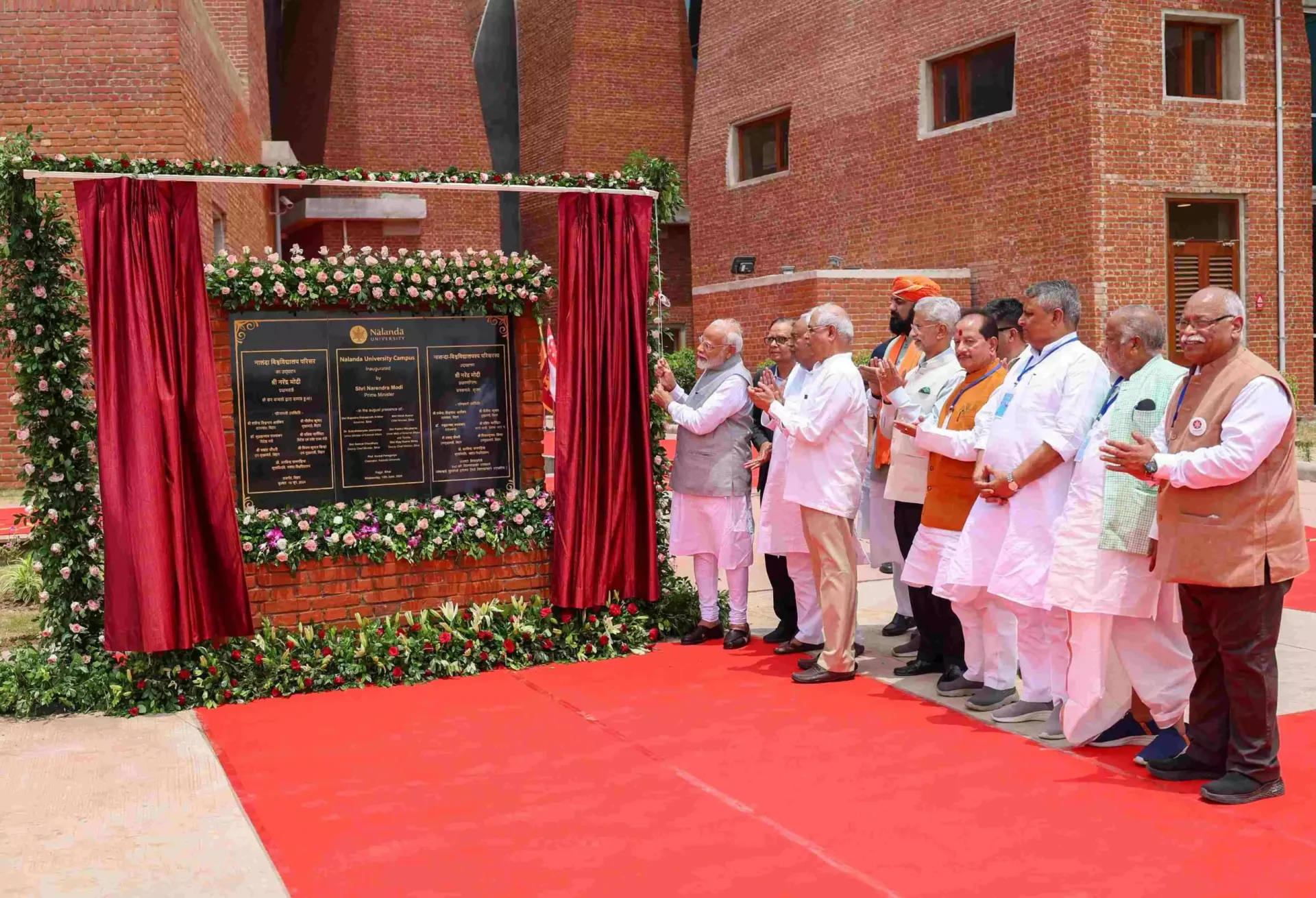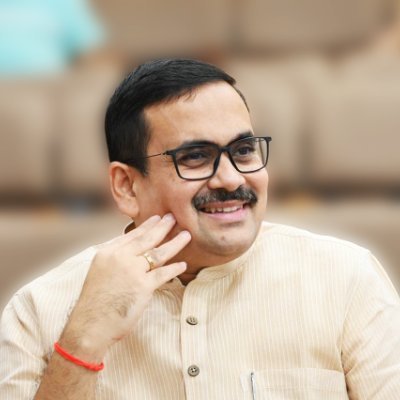In line with Prime Minister Modi’s vision, India is re-emerging as a global knowledge hub, exemplified by the relaunch of Nalanda University and international IIT campuses, among other things
It was a fortuitous coincidence that just around the time that the Nalanda University was re-inaugurated, symbolising the achievement of a historic milestone in India’s quest for re-emerging as a significant knowledge society, Prof Amartya Sen was present in India. The professed aim of his trip was to rejoice on the reduced seats for the BJP and the postponement — as he termed it — of the ‘Hindu Rashtra’ project. One need not take cognisance of such puerile statements emanating from an increasingly senile mind. What is of significance is that Prof Sen was present in India when, within days of taking office for a historic third time as Prime Minister, Narendra Modi inaugurated the new campus of Nalanda University in the presence of an eminent array of academic leaders and diplomats. Heads of Mission from 17 countries were present, expressing a keen and anticipated interest in the taking off and success of the project.
The new campus of Nalanda University symbolises, in a very concrete manner, and rekindles, India’s civilisational aspirations for being recognised once more as a knowledge society, an incubation-centre of ideas, knowledge, research, innovation and invention. The successful rebuilding and launching of the new Nalanda University campus, was a stark contrast to the nepotism, waste of public funds, prevarication, inaction, stunted vision and lack of direction and intent that characterised the period when Prof Amartya Sen and his cabal of academics and ideologue-scholars dominated the project and drove it astray by nearly grounding it in the quick-sands of intellectual cronyism and unaccountable arrogance. It showed a mirror to the likes of Prof Sen, who had predicted that the project would sink without their tutelage and mentorship under the Modi dispensation. Not only did the project not sink, it acquired its actual status, developed its real scope and took off in a way, which neither Sen nor his doting pupils would have imagined or anticipated.
Prime Minister Modi spoke of the values of Nalanda and of Nalanda University being a symbol of ‘India’s academic heritage and vibrant cultural exchange.’ PM Modi averred ‘that the revival of Nalanda near its ancient ruins will introduce India’s capabilities to the world as it will tell the world that nations with strong human values are capable of creating a better world by rejuvenating history.’ His mission, he said on that historic occasion, was to see India become ‘the centre of education and knowledge for the world. My mission is that India should again be recognised as the most prominent knowledge centre of the world.’
With the IIT Madras inaugurating its campus in Zanzibar-Tanzania in November last year and the Delhi IIT launching its campus at Abu Dhabi on September 2, inaugurated by the Crown Prince Sheikh Khaled bin Mohamed days before his official visit to India, that mission of seeing India emerge as the most prominent knowledge centre of the world is well on its way and track. The relaunch of Nalanda University, the setting up of overseas IIT campuses are, thus, significant milestones in that quest. These also come across as significant steps forward in actualising India’s educational vision in ‘Amrit Kaal.’
The IIT Abu Dhabi campus will have, among a number of subjects, energy engineering and will also partner with a number of leading educational institutions in the region. An education-eco-system and web is a key focus area of the endeavour. The IIT Madras’s Zanzibar-Tanzania campus will focus on, among other subjects, Data Science, Artificial Intelligence, and MTech in Ocean Structures. This campus particularly is set to evolve into a significant symbol of PM Modi’s commitment to furthering the vision of an emerging and empowered ‘Global South.’
Thus, the ancient trade routes, which civilisational India’s merchants and philosophers and teachers once creatively dominated, are now seeing the spread, in a new age, of India’s knowledge systems, technology and of her intellectual and contemplative prowess.
The discovery of the monsoon winds, quickened pace, and, writes Nayan Chanda, scholar and historian of international linkages, ‘the success in shortening the sailing time across some three hundred thousand nautical miles of sea to India intensified contact and produced rising trade volume…’ The celebrated Greek geographer Strabo recorded that ‘previously not twenty ships dared…peep outside the Straits [Bab-el-Mandeb], but now great fleets are sent as far as India and the extremities of Ethiopia.’ With the changed circumstances, a merchant ship left, writes Chanda, ‘almost every day of the season carrying tin, lead, wine, coral, glass, and gold and silver coins…’ This intensification of trade and commerce also led to the dissemination of knowledge and of the new discoveries and inventions that were incubated in civilisational India.
In his thought-provoking study, ‘Creative India: from Mohenjo Daro to the Age of Ramakrishna-Vivekananda’ (1937), intrepid and peripatetic thinker-philosopher, prolific author and world traveller, Benoy Kumar Sarkar (1887-1949), writing of Indian achievements in knowledge, argued how in India of the ages, ‘Hindus have discussed every subject in the universe from the tamarind to the pole-star. Hindu literature and art are the literature and art of every human passion and activity.’ Sarkar argued that ‘metaphysical subjectivism’ was the ‘least part of Hindu thought, and pessimism the farthest removed from actual Indian life and institutions.’
Sarkar dwelt on the rich and varied achievements of the Indian mind. Hindus, he wrote, ‘have written on “pure” mathematics; their algebra and arithmetic were in advance of those of the Greeks. The Hindus have in fact laid down the foundations of the mathematical science known to the modern world.’ Sarkar went on to argue that ‘Hindu literature on anatomy and physiology as well as eugenics and embryology’ had been voluminous and that Hindus knew ‘the exact osteology of the human body two thousand years before’ the Belgian Andreas Vesalius, known to have written the first textbook on anatomy. Hindus, Sakar, argued, wrote on ‘government, municipal institutions, taxation, census, jurisprudence, warfare and the laws of nations’, and their investigations compared with the likes of Aristotle, Machiavelli and Jean Bodin.
Joining the linkage-dots of knowledge dissemination, Sarkar observed how Hindu treatises on ‘algebra, arithmetic, astronomy, pharmacy, chemistry, medicine and surgery were not confined to India. They were translated into Chinese (and ultimately into Japanese) on the one side; and on the other, were translated into Arabic by the Moslems of Western Asia. In the Middle Ages, the Moslems taught the Christians of Europe at Cordova in Spain, at Cairo in Egypt, at Damascus in Syria, and at Bagdad on the Tigris. The Europeans have thus learnt the Hindu decimal system of notation in mathematics, the use of some Hindu medicinal drugs, and Hindu metallurgy.’
Drawing a grand canvas, Sarkar observed that this was made possible because in a ‘sense the geography of Creative India’ was ‘as wide as Asia itself.’ This capacity to move out and beyond one’s frontiers in ‘order to live abroad’, was unique to civilisational India. It was inspired, he pointed out, by the ‘cult of charaiveti (march on).’ It enabled civilisational India’s thought and knowledge to penetrate and to shape and inspire civilisations across continents.
Sarkar saw India as a ‘creator of values.’ He foresaw how India, creator of values, ‘creative India’ as he termed her, would, in the ‘progress of contemporary civilisation, in schemes of world-reconstruction and in projects of futuristic societal-planning’, continue to function ‘as a colleague of other creative members of the world system.’ The place of creative India, in the world of values, he presciently noted, ‘will be found to be extensive and varied.’
The spread of India’s knowledge-educational institutions and symbols across the globe, including the relaunch of the iconic Nalanda University, are defining India as the ‘creator of values.’ They are major steps in fulfilling PM Modi’s vision of India’s eventual emergence as the most prominent knowledge centre of the world.
(The views expressed are the author's own and do not necessarily reflect the position of the organisation)


